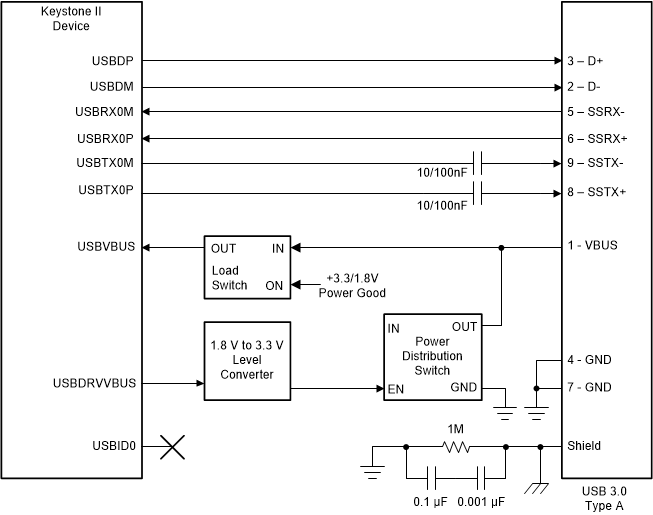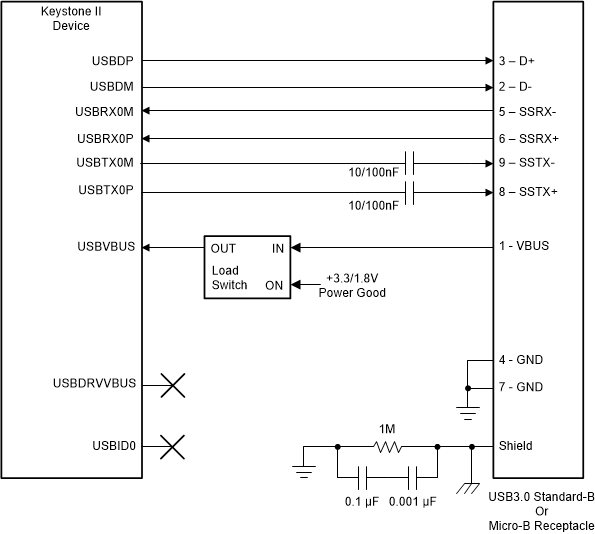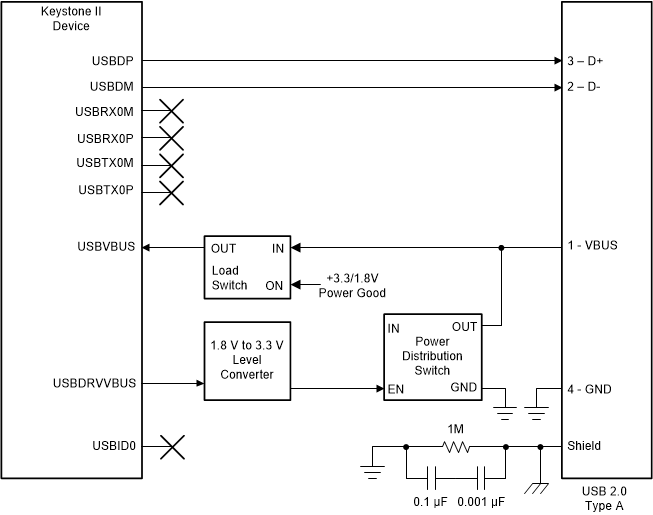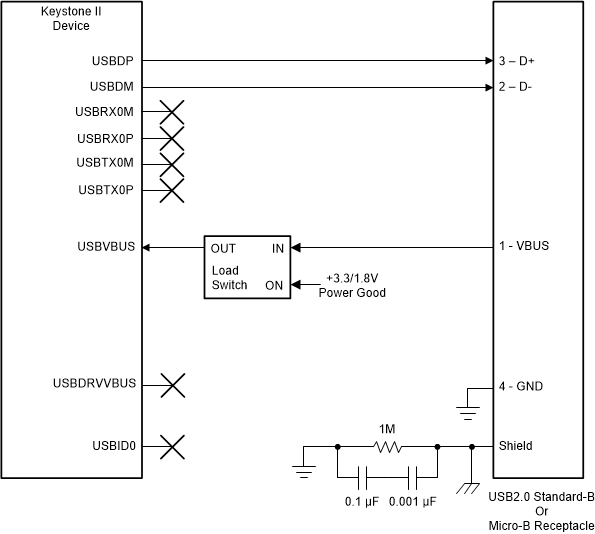SPRACL9 May 2019 66AK2E05 , 66AK2H06 , 66AK2H12 , 66AK2H14 , AM5K2E02 , AM5K2E04 , TMS320C6652 , TMS320C6654 , TMS320C6655 , TMS320C6657 , TMS320C6670 , TMS320C6671 , TMS320C6672 , TMS320C6674 , TMS320C6678
- KeyStone Multicore Device Family Schematic Checklist
7.1.1 USB
- The USB reference clock must be AC coupled with 100 Ω termination between them.
- RESREF connection to ground through a 200 Ω, 1% resistor used for termination tuning and other internal analog references in the PHY.
- The connection diagram for USB3.0 host/device and USB2.0 host/device are shown in Figure 5 through Figure 8.
- VPP, VPPTX, VDDUSB, VPH pins should be connected to their respective power groups via recommended filtering circuit as outlined in the device-specific Hardware Design Guide. For the link, see Section 2.
- The input pin USBVBUS is only 5 V tolerant when the DVDD18 and DVDD33 supplies are valid. It is not 5 V tolerant prior to that time. A power switch in series between the VBUS pin on the USB connector and the USBVBUS pin can be disabled when the DVDD18 and DVDD33 supplies are not valid. The control for this switch should come from circuitry monitoring that these supplies are at valid levels.
 Figure 5. USB3.0 Host Connection
Figure 5. USB3.0 Host Connection  Figure 6. USB3.0 Device Connection
Figure 6. USB3.0 Device Connection  Figure 7. USB2.0 Host Connection
Figure 7. USB2.0 Host Connection  Figure 8. USB2.0 Device Connection
Figure 8. USB2.0 Device Connection